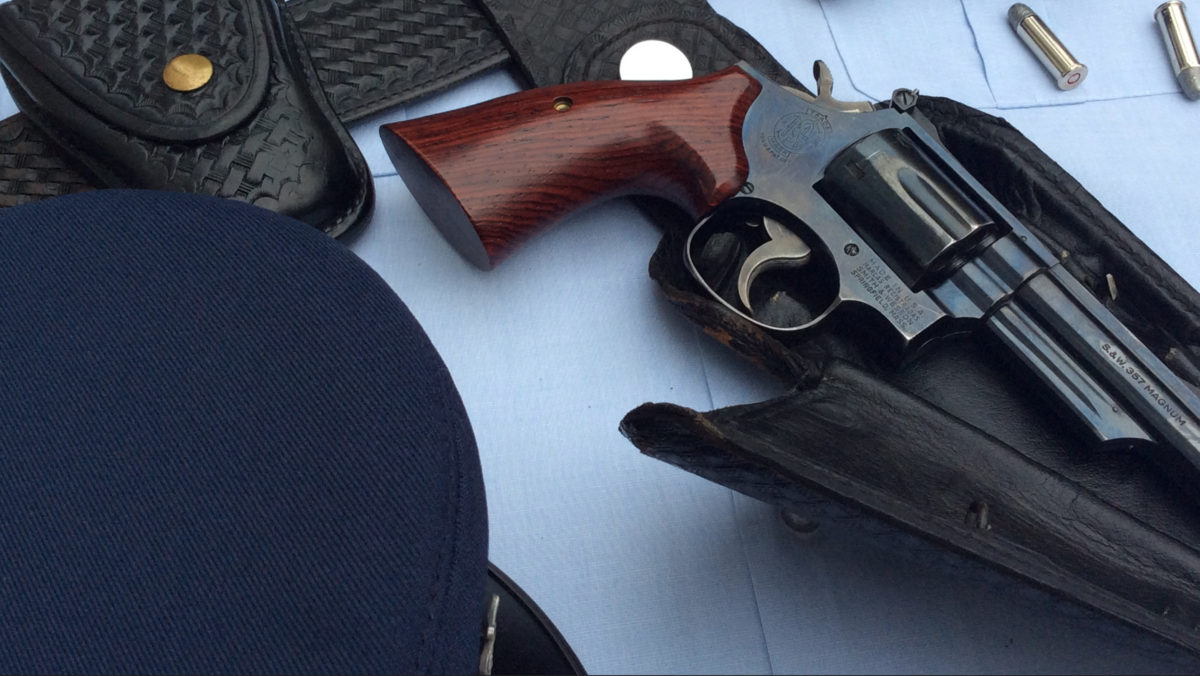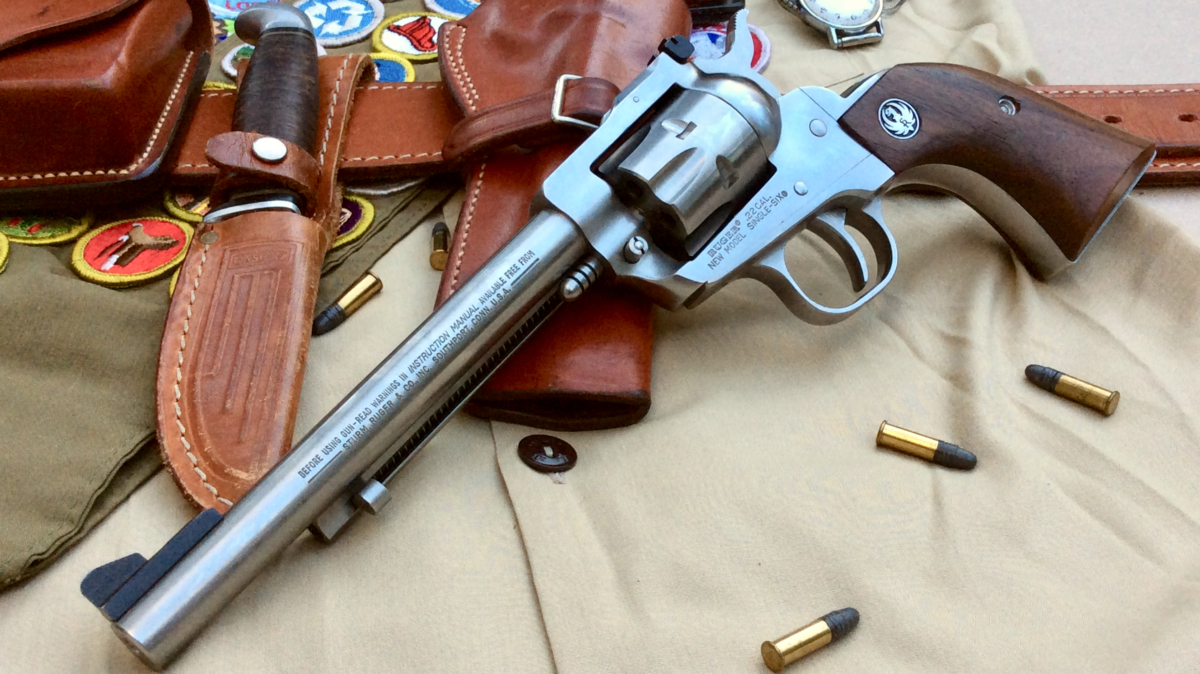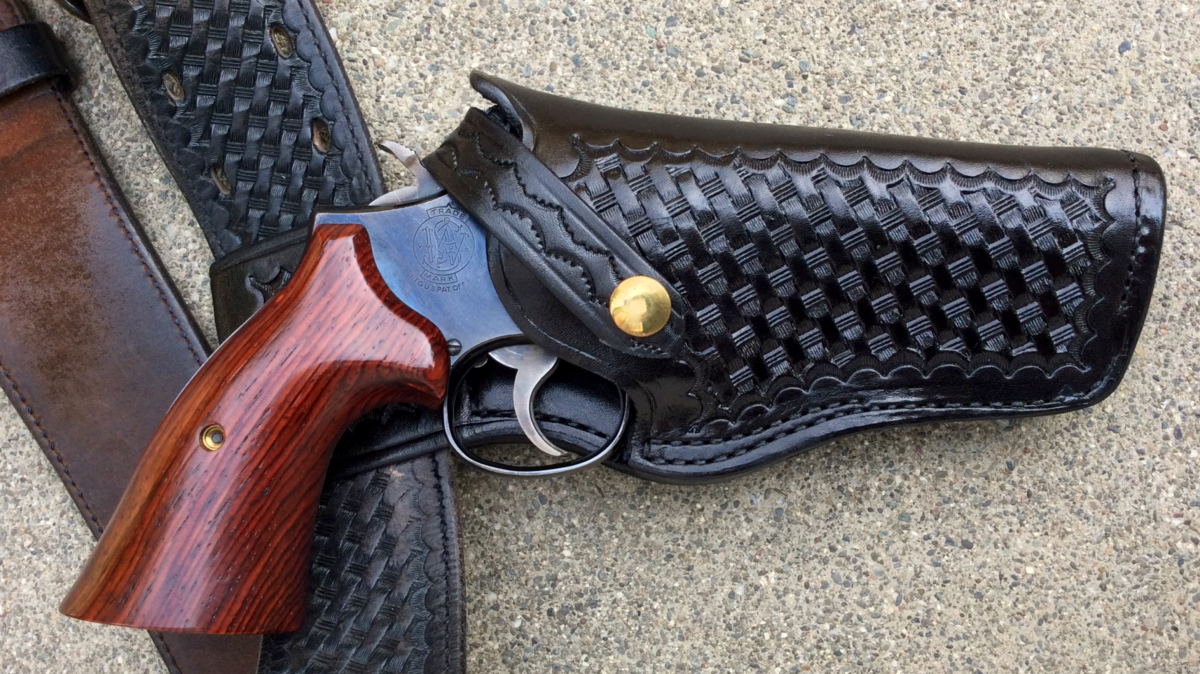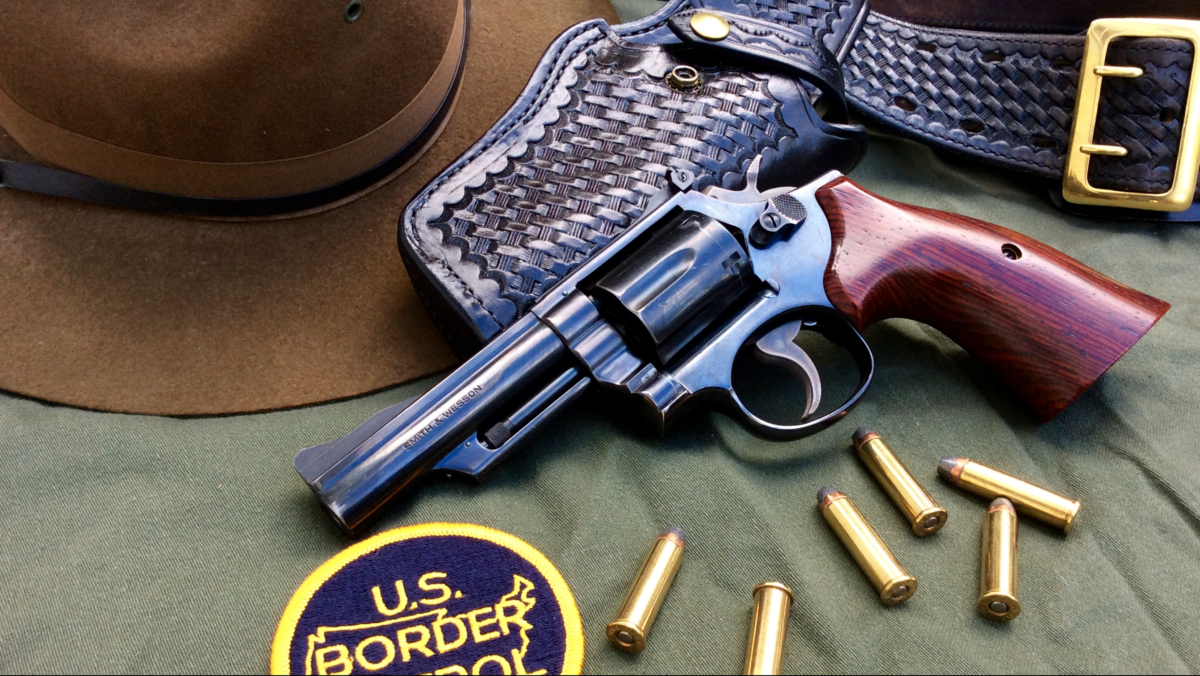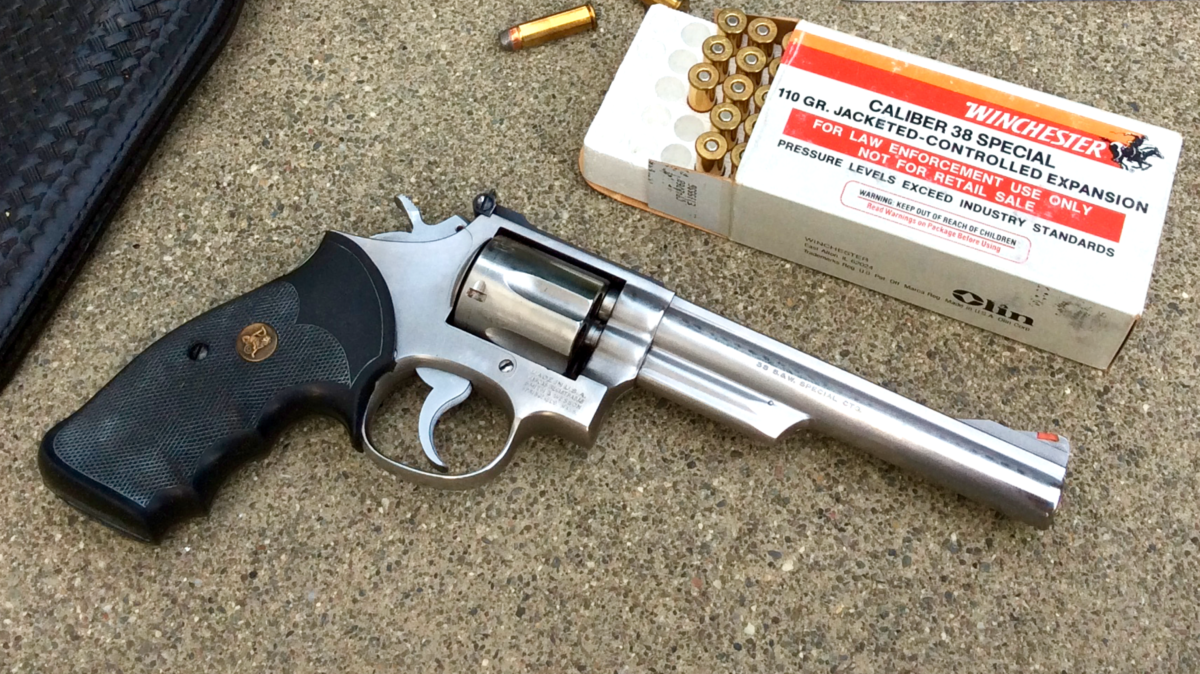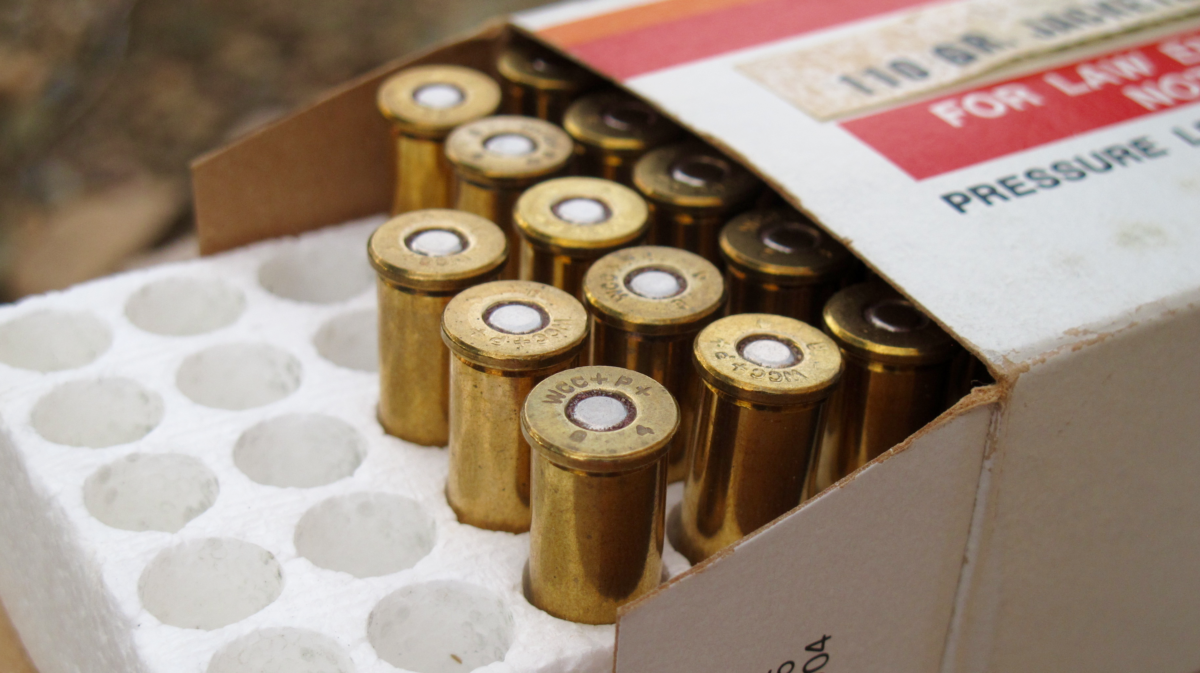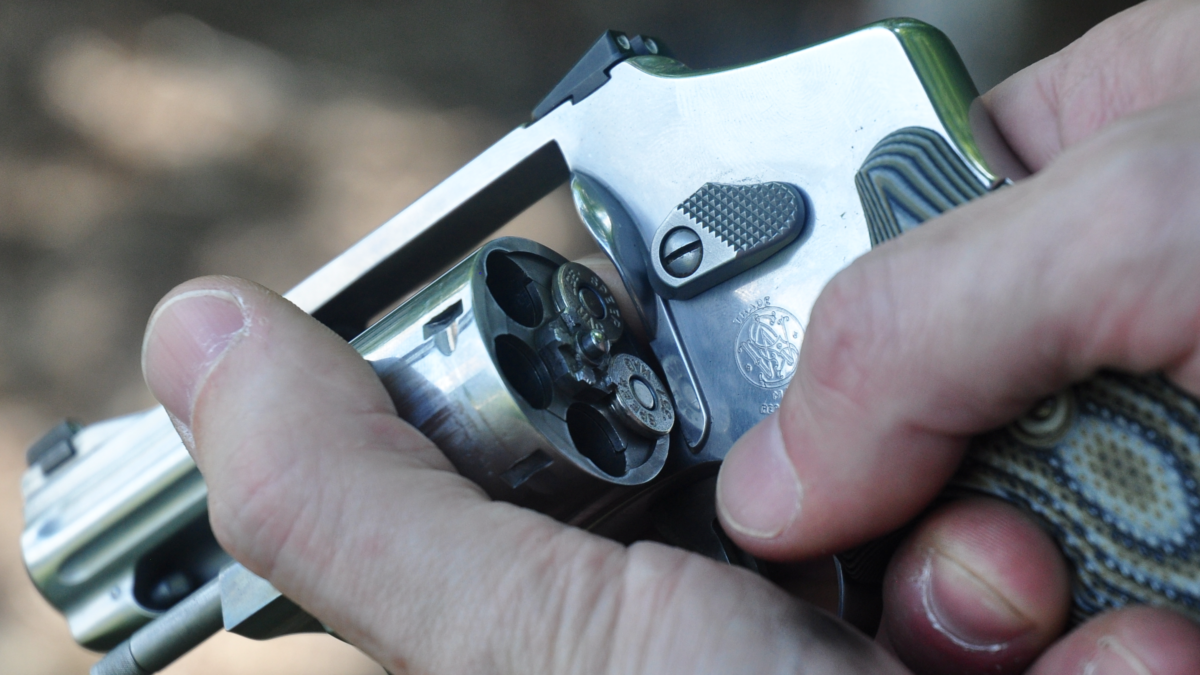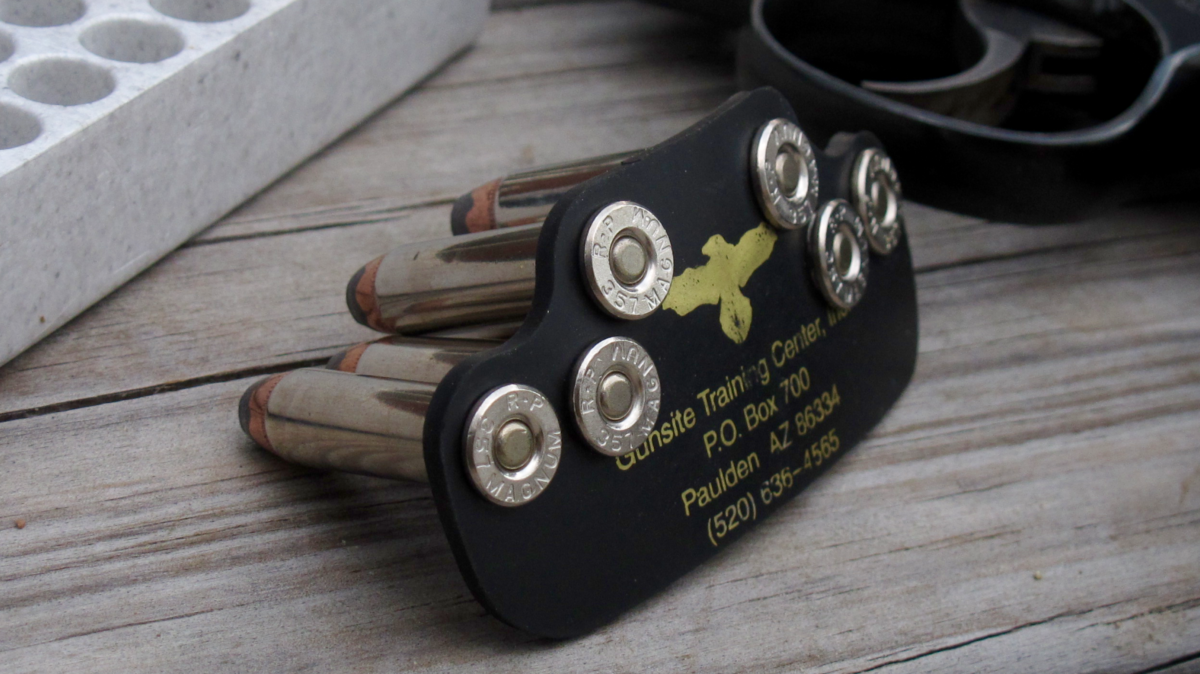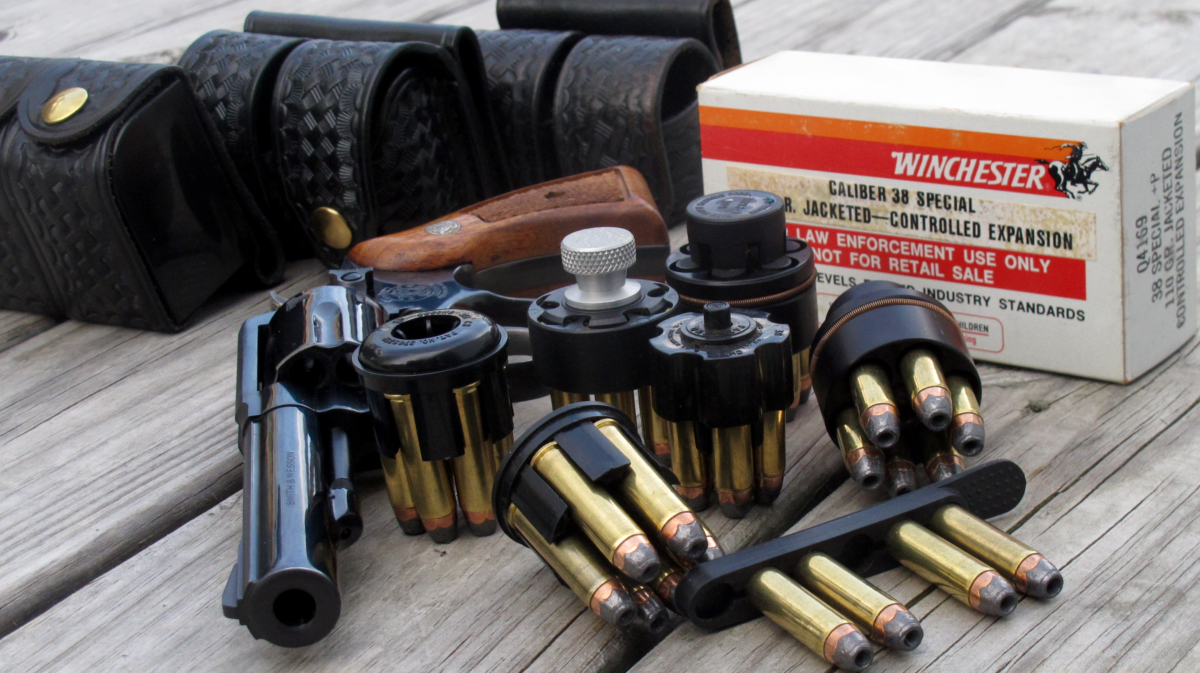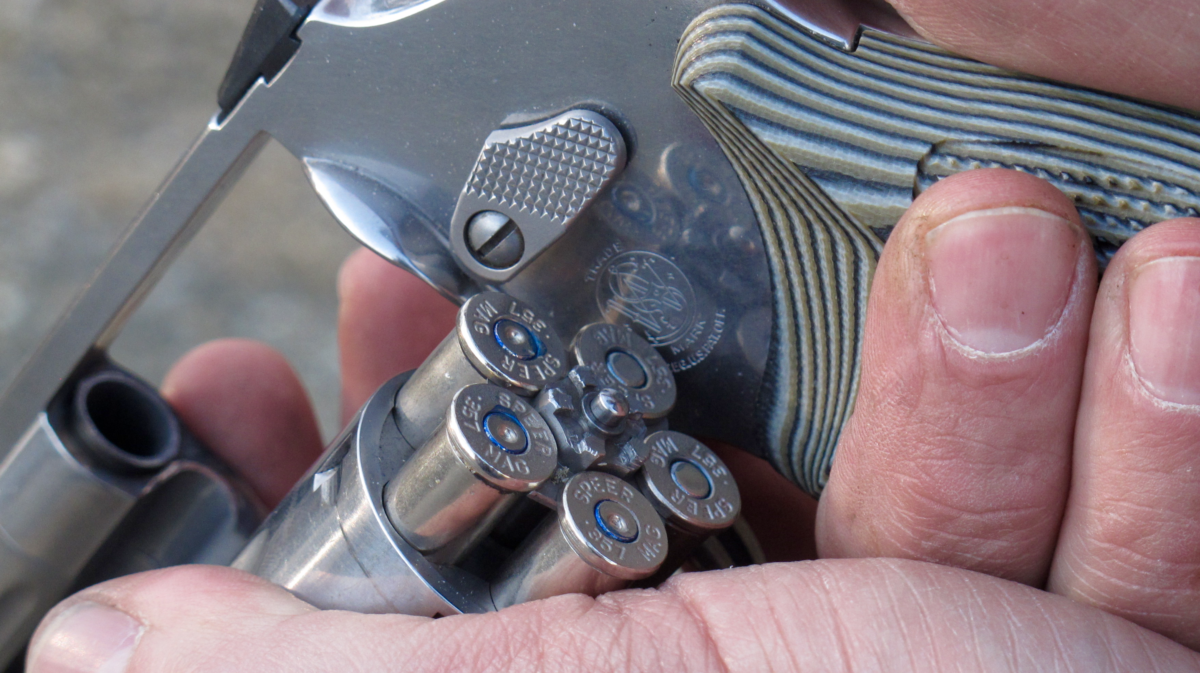Any RevolverGuy who grew up like I did, watching a steady diet of the 1970s police drama Adam-12, will certainly remember those Blue Knights, Malloy and Reed, each drawing a Combat Masterpiece revolver from a clamshell holster that sprung open like magic every time our heroes needed to draw down on some counterculture scumbag. The image of those great sixguns being drawn from the trick holsters was pure TV magic! Continue reading “Fighting Leather: The Clamshell Holster”
Author: Mike
The Making of a RevolverGuy: My First Revolver
My first gun, not surprisingly, was a .22 rifle. That seems to be where most of us start out, because it’s a lot easier to teach a youngster how to shoot a rifle than it is a handgun. I always had a lot of fun with that rifle, but the time came when I wanted to shoot a handgun, instead. I didn’t know it quite yet, but I was ready to take my first steps as a RevolverGuy. Continue reading “The Making of a RevolverGuy: My First Revolver”
A Review of the Tex Shoemaker Jordan Rig
Is there anything sweeter to a RevolverGuy than packing a classic revolver in a classic holster made out of premium leather? I have to admit that I spend more time carrying guns (bottom feeders, no less!) in polymer holsters these days, but my revolvers all ride in cow or horse hide. I won’t deny that modern chemistry has given us some wonderful materials to make belts and holsters from, but my round guns will always get holstered in leather, thank you very much.
Luckily for me, Justin understands this quirk in my nature. He might pack his 640 Pro in a polymer holster worn on a nylon riggers belt, but he still gets the fact that custom leather rigs are special, and that some guns deserve them. Recently, in a wonderful, RevolverGuy type of gesture, he gave me a Jordan holster for my cherished Smith & Wesson Combat Magnum. It’s a beautiful rig, and I’d like to give you a tour of it. Continue reading “A Review of the Tex Shoemaker Jordan Rig”
Fighting Leather: The Jordan Holster
The sands of time fall slowly through the neck of the hourglass at the border, and sometimes they stop entirely. Despite the progress made in other parts of the nation by the early part of the 20th Century, the border Southwest of the 1920s to 1940s looked virtually unchanged from the days before the Mexican-American War, almost a hundred years earlier (1846-48). The endless revolutions, bandit wars, cross-border raids, smuggling, looting, livestock theft, lynchings, military invasions, murder, and “normal” border violence disproved any notion that the days of the “Wild West” were over. Continue reading “Fighting Leather: The Jordan Holster”
Missing Link: The Smith & Wesson Model 68
When Smith & Wesson introduced their Model 69 Combat Magnum revolver in .44 Magnum back in 2016, there were a few RevolverGuys out there who wondered if S&W skipped a model number. The shooting world already knew about the popular Model 67 Combat Masterpiece Stainless, and now we had the new Model 69 Combat Magnum in .44, but shouldn’t there have been something in the middle? A Smith & Wesson Model 68, perhaps? Continue reading “Missing Link: The Smith & Wesson Model 68”
Ammo Evolution: .38 Special Treasury Load
When I was a young man in the 70s, my brother and I spent a lot of time on police ranges, because our dad was an officer and rangemaster for the California Highway Patrol (CHP). As “range rats” of the highest order, we gladly took care of the chores that none of the officers wanted to do, such as posting targets, policing spent brass, issuing ammunition, and so forth.
In between relays, we got to shoot a bit ourselves. Mostly it was with our .22s, but sometimes we shot our dad’s duty gun (a 6” Python) with the hot .38 Special cartridge issued by the Patrol. This cartridge, known as the “Treasury Load,” is frequently confused with the more popular “FBI Load,” and there’s a lot of misconceptions about it in the shooting world. Therefore, I thought the RevolverGuy audience might enjoy it if we explored this interesting bit of revolver history and set the record straight on it. Continue reading “Ammo Evolution: .38 Special Treasury Load”
Thoughts On the Partial Revolver Reload
In a previous post, Justin introduced the idea of the Partial Revolver Reload Drill for shooters who use the popular strip-style loaders (Speed Strip, Tuff Strip, Swift Strip, etc.), and I think it’s such a good idea that I thought I’d spend a little time discussing the concept. Continue reading “Thoughts On the Partial Revolver Reload”
The Gunsite Training Center Loader
The previous article on classic speedloaders generated some interest, and a fortunate spinoff for the RevolverGuy audience is that Mr. Bert DuVernay, former Director of the Smith & Wesson Academy, was kind enough to loan us some other, lesser-known, designs for examination. One of these was the Gunsite Training Center loader. Continue reading “The Gunsite Training Center Loader”
Blast from the Past: Popular Police Speedloaders of the 1970s
In the early moments of 6 April 1970, a desperate gun battle erupted between officers of the California Highway Patrol and two heavily armed felons in the unincorporated city of Newhall, California. The felons killed four officers, making the “Newhall Shooting” one of the most deadly law enforcement gunfights of the modern era, and the most deadly in the history of the California Highway Patrol (CHP).
The last officer slain by the felons was killed while attempting to reload his revolver and get back into the fight. Officer James E. Pence, Jr. had just completed filling the cylinder of his Colt Python with loose cartridges from his dump pouch, and was in the process of closing the cylinder, when he was killed with an execution-style shot to the back of his head. Continue reading “Blast from the Past: Popular Police Speedloaders of the 1970s”
Reconsidering the Revolver Tactical Reload
Back when I was flying KC-10s for the Air Force in less-than-friendly areas, there was a push to teach “tactical” arrivals and departures for large, heavy aircraft like my tanker. Our concern was that bad guys with missiles and guns could pick a spot outside the fence of our protected airfields and take shots at us when we were low and slow, on takeoff or landing.
Since we lacked the speed, maneuverability and defensive systems of other aircraft, it was decided that we would arrive at a high altitude over the field and spiral down within its secure confines to a landing, then do the reverse on the way out. This would supposedly frustrate the efforts of the enemy to get a good shot at us from outside the wire. Continue reading “Reconsidering the Revolver Tactical Reload”

